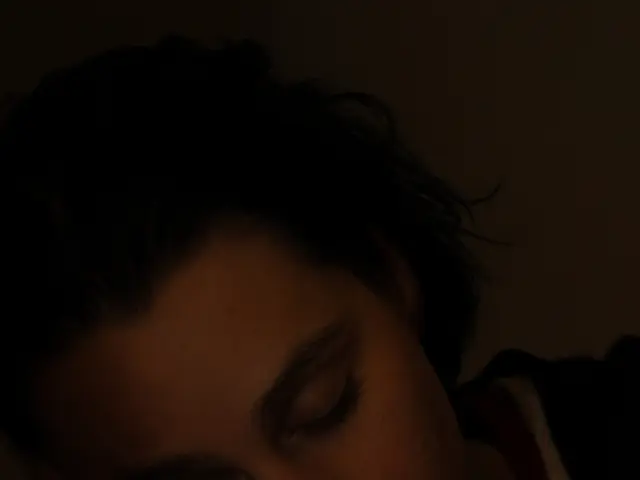Self-Waxing Guide: Easily Resolve Unwanted Hair Predicament in 5 Simple Steps
Worried about the cost and pain of salon waxing? No problem! DIY bikini waxing at home is easier than you think, as long as you have the right tools and follow some simple guidelines. In this article, we will walk you through the process step-by-step, from preparation to application to aftercare. So, grab your waxing kit, read on, and get ready to achieve salon-smooth results right in your own bathroom!
Preparation
Different waxing methods work better for various hair types, so it's essential to choose the right one for your needs. Here's a quick rundown of the most common types:
- Cold Wax Strips - Best for fine or short hairs.
- Soft Warm Wax - Suitable for all hair types, but may require more time to cool and harden.
- Hard Warm Wax - Ideal for coarse or thick hair as it hardens quickly and grips hair tightly.
Before you start waxing, make sure to clean your skin thoroughly. Avoid using any lotions, creams, or oils on the area you intend to wax, as they will interfere with the adhesion of the wax. If you have sensitive skin, consider taking a pain reliever, such as Advil, about 30 minutes before waxing.
Another essential step in preparation is exfoliating your skin. Gently exfoliate the day or two before waxing with a loofah, body scrub, or any other exfoliating tool to help prevent ingrown hairs. However, avoid exfoliating 24 hours before or after waxing.
Tip!
Application
No matter which type of wax you choose, the application process is essentially the same.
For cold wax strips, simply warm them between your hands to activate the wax. For hot or warm wax, heat the wax according to the package instructions until it reaches the right consistency – warm but not burning.
Once the wax is ready, apply it in the direction of hair growth using a waxing spatula or the included wooden applicator stick. For best results, apply the wax in small, rectangular sections, about 1 inch wide and 3 inches long.
If you're using cloth strips, press them onto the wax, making sure they adhere evenly to your skin. If you're using disposable paper or fabric strips, simply wait a moment for the wax to cool slightly before pressing the strips onto your skin.
Warning!
Removal
When the wax has cooled and hardened, hold the surrounding skin taut, and quickly pull the strip off in the opposite direction of hair growth. Pulling quickly helps minimize pain and ensures that the wax grips the hairs effectively.
If you have any strays or missed hairs, wait a few minutes for the wax to cool, then carefully tweeze the remaining hairs to avoid causing any unnecessary irritation.
Tip!
Aftercare
After waxing, soothe your skin with aloe vera, a moisturizing cream, or any other soothing gel to reduce redness and inflammation. It's also a good idea to wear loose clothing to prevent friction and irritation on your freshly waxed skin.
Avoid exfoliating the area for at least 24 to 48 hours after waxing to prevent ingrown hairs. Instead, wear loose clothing and stick to gentle cleansing with warm water to keep the area clean and hydrated.
Warning!
FAQs
1. Is it safe to do a DIY bikini wax at home?* When done correctly, DIY bikini waxing at home is generally safe. However, it's essential to follow proper procedures and use high-quality waxing products designed for sensitive areas.
2. How long does bikini waxing last?* The duration of hair growth can vary from person to person, but most people find that their hair grows back within 3 to 4 weeks after waxing.
3. How often should I wax to prevent ingrown hairs?* To minimize ingrown hairs, it's best to wax regularly, every 3 to 4 weeks. Exfoliating between waxing sessions can also help.
4. Can I use any type of wax for my bikini area?* It's essential to choose a wax specifically designed for sensitive areas, which will be gentle on your skin. Avoid using harsh, abrasive waxes that could cause irritation.
5. What is the best way to clean my waxing tools?* Clean your waxing tools thoroughly after each use by washing them with warm water and antibacterial soap. Don't share your waxing tools with others, as this could spread bacteria and increase the risk of skin infections.
With these tips in mind, you're now ready to conquer DIY bikini waxing at home! Whether you're working on a fresh start or looking to maintain your smooth style, following these steps will help ensure a pain-free, successful wax every time. Happy waxing!
- To ensure the best results while waxing at home, consider your hair type when choosing the right waxing method. For fine or short hairs, use cold wax strips, while soft warm wax is suitable for all hair types and hard warm wax is ideal for coarse or thick hair.
- If you have sensitive skin, especially in the bikini area, it's recommended to exfoliate before waxing to prevent ingrown hairs. However, avoid exfoliating 24 hours before or after waxing.
- For a more comfortable waxing experience, warm up the waxing area using warm water before beginning, as this will open your pores and soften the hair for easier removal.
- After completing the waxing process, soothe your skin with aloe vera, a moisturizing cream, or any other soothing gel to reduce redness and inflammation. Wear loose clothing to prevent friction and irritation on your freshly waxed skin.




